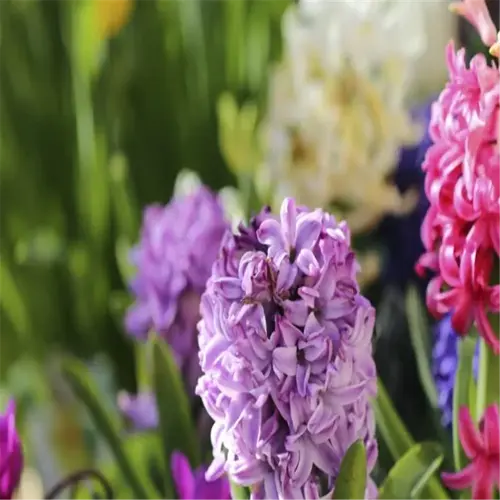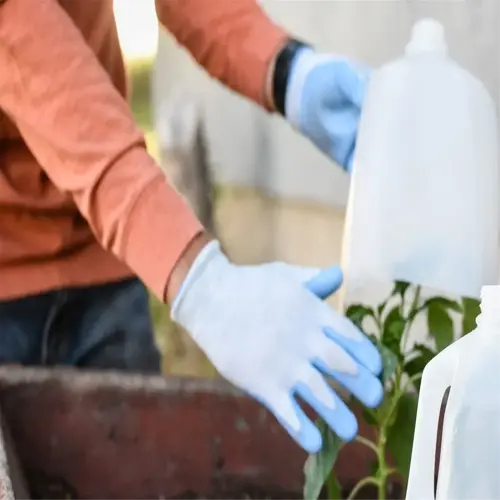7 Expert Tips for Perfect Raised Bed Soil Every Time

Written by
Benjamin Miller
Reviewed by
Prof. Charles Hartman, Ph.D.Soil for raised beds must have equal parts (1:1:1) compost, aeration, and mineral content
Test the pH level each month, the best pH for raised beds is 6.2-6.8 to avoid nutrient lockout
Include a layer of 4-6 inches of a coarse material for drainage at the root level
Do not use gravel as drainage, a uniform mix of perlite and sand will work just as well and prevent waterlogging
Rotate crops each year to replenish nitrogen and deter disease
Add 15-20% to compost stock each year to keep microbial activity high
Article Navigation
Soil for a raised bed structure is fundamentally different than standard garden dirt. While ground dirt contains some mixture of coarse and fine medium or soil, a raised bed soil composition will have a large portion of coarse material such as perlite that encourages root aeration in the soil while compost retains the nutrients necessary for the plant(s) to thrive. This mixture is kept in balance so that you do not waterlog your plants, which is a common cause of plant decline in ground beds. Personally, for the last 12 years of designing gardens, I have seen this mix save tomatoes from root rot and carrots from not reaching full size.
Five strategies differentiate flourishing beds from indifferent ones. You'll layer drainage materials, balance organic matter, test pH levels, rotate crops, and refresh the soil once a year. You'll use each pairing in succession, if you ignore one your plants will show you through yellowing leaves and stunted growth.
The quality of your soil determines your kale's success or failure. Last year, we helped a client with a patch of cabbage that bounced back after we made adjustments to their compost-to-mineral ratio. Weeds, pests, and diseases thrive in poor soil; a balanced, healthy mix creates an ecosystem that supports self-regeneration. How your plants thrive starts with what they are rooted in.
DIY Soil Recipe Step-by-Step
When creating DIY soil recipes, it's vital to understand the function and purpose of each layer. Looking for a base comprising 50% compost, the compost is not just decomposed leaves, but the active fuel for microbes. I obtain my compost from a local mushroom farm, where they synthetically increase nitrogen levels through microbial activity and decomposition, without adding storing synthetic chemical additives. The remaining half is equal parts of coarse sand for drainage and shredded bark, which resists compaction.
Layering is more important than you think. Turning compost into alternating layers with aeration materials like perlite can generate air pockets that the roots can take advantage of. Switch to crops in the fall, a client's spinach outperformed others after we put in worm castings, even just 5% led to a 30% increase in leaf size. The microbe-packed worm castings (they look like dark granules) are live microbiology in a bag!
There is no need to speak dang about sustainability here, it is an obligation. Your source of compost (green waste) will play a large part in how long your soil will last. Municipal green waste often has herbicides within it; I always test small batches prior to use by germinating a few bean seeds first. To help you visualize: one cubic yard of compost made by you means you have kept 200 pounds of organic material from the landfill. That is pretty powerful stuff!
To make sure the ingredients do not clump or stick together, always dry mix the components. If you have a large raised bed, I have a cement mixer, but a tarp and shovel can work too. The goal is to mix all the components until you have an even texture that crumbles like a chocolate cake. If you even form a wet ball, then add in more bark. Your plants will appreciate it.
Base Layer (Aeration)
- Materials: Untreated logs/sticks (2-4 inch diameter) or coarse wood chips
- Depth: 4-6 inches (10-15 cm) for proper airflow
- Avoid: Rocks/concrete blocks that restrict root penetration
Middle Layer (Nutrient Base)
- Mix Ratio: 50% compost (mix 3+ sources) + 50% screened topsoil
- Depth: 8-12 inches (20-30 cm) for root development
- Amendment: 1 cup worm castings/sq ft (30g/0.09 sq m)
Top Layer (Planting Zone)
- Composition: 2 inches (5 cm) vermicompost + mineralized soil
- Function: Immediate nutrient access for seedlings
- Maintenance: Annual 1-inch (2.5 cm) compost refresh
Pre-Layer Preparation
- Soil Testing: Conduct pH test (ideal 6.2-6.8) using analog meters or lab analysis
- Site Selection: Choose level ground with 6-8 hours of sunlight daily
- Weed Barrier: Install cardboard or newspaper at bed base to suppress weeds
Post-Layer Maintenance
- Watering: Soak layers thoroughly after building (5-10 gallons per bed)
- Curing: Wait 2-3 weeks before planting for microbial activation
- Mulching: Add 3 inches (7.6 cm) straw post-planting
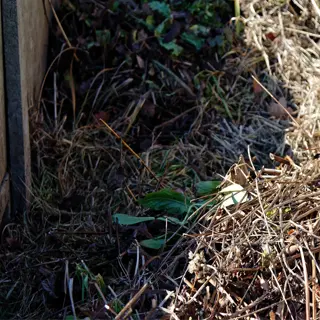
Compost
- Source Diversity: Combine mushroom/leaf/manure compost (3:2:1 ratio)
- Screening: Filter through 0.5-inch (1.27 cm) mesh for consistency
- Moisture Control: Maintain 40-60% dampness (wrung-out sponge texture)
- Nutrient Profile: 1.5-3% nitrogen content for vegetable growth
- Sustainability: Use municipal compost programs to reduce costs
- Testing: Verify maturity through smell (earthy) and temperature (cool)
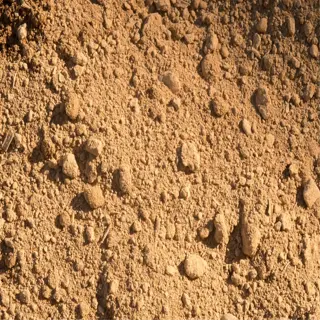
Mineralized Soil
- Application Rate: 1-2 cups/sq ft (120-240g/0.09 sq m)
- Calcium Boost: Contains 12-15% calcium carbonate equivalent
- pH Impact: Raises acidity by 0.5-1.0 points over 6 months
- Alternatives: Crushed oyster shells at 0.5 cups/sq ft (60g)
- Mixing: Blend thoroughly with rotary tiller or garden fork
- Safety: Wear N95 mask during application to prevent inhalation
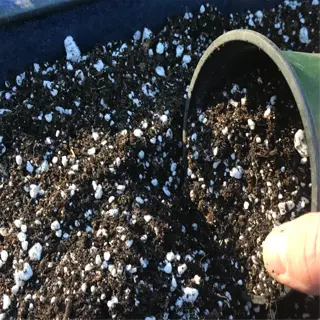
Perlite
- Particle Size: 0.125-0.25 inch (3-6 mm) chunks for optimal drainage
- Ratio: 20% by volume in container gardens
- Neutral pH: 7.0-7.5 ensures compatibility with acidic amendments
- Sterility: Pre-bagged versions are pathogen-free
- Weight: 5-8 lbs/cu ft (80-128 kg/m³) for lightweight beds
- Substitute: Pumice for long-term structural stability

Vermiculite
- Water Retention: Holds 3-4 times its weight in moisture
- Nutrient Bonding: Cation exchange capacity of 100-150 meq/100g
- Application: 15-25% mix for seed-starting soils
- Expansion: Heated to 1500°F (815°C) during processing
- Safety: Contains trace asbestos - use horticultural grade only
- Alternate Use: Rooting cuttings in pure vermiculite
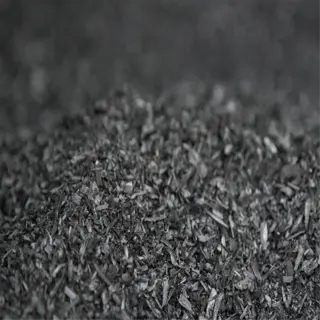
Biochar
- Activation: Charge with compost tea for 48 hours before use
- Carbon Sequestration: 50% stable carbon content
- Application Rate: 5-10% by volume in topsoil
- pH Impact: Neutral to slightly alkaline (7.0-8.0)
- Microbial Habitat: 300% increase in fungal hyphae observed
- DIY Production: Pyrolyze hardwood at 900°F (482°C) in kiln
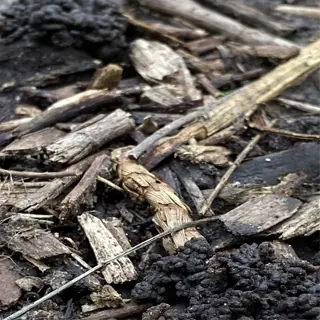
Worm Castings
- NPK Ratio: 1-0-0 with 5% organic matter
- Application: 0.25 inch (6 mm) layer during transplanting
- Tea Production: Steep 1:10 ratio in water for 24 hours
- Microbes: Contains 10⁸ CFU/g beneficial bacteria
- Storage: Keep moist in sealed containers up to 6 months
- Quality Test: Dissolve in water - no sediment = fully processed
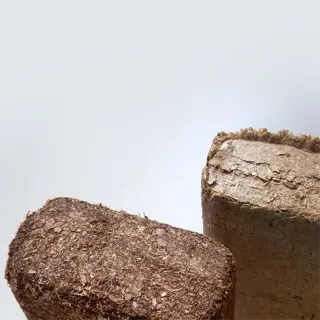
Coconut Coir
- Expansion: 1 brick = 9 liters (2.4 gallons) when hydrated
- pH Neutral: 6.5-7.0 ideal for most vegetables
- Salt Content: Rinse 3x if EC > 2.0 mS/cm
- Lifespan: Degrades slower than peat (3-4 years)
- Water Retention: 8-9 times its dry weight capacity
- Sustainable: Renewable alternative to peat moss
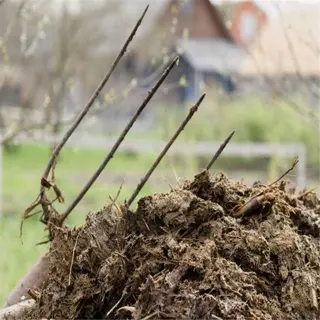
Aged Manure
- Curing Time: Minimum 6 months decomposition
- Temperature: Must reach 130°F (54°C) to kill pathogens
- NPK Content: 0.5-0.3-0.5 average composition
- Salt Warning: EC < 3.0 mS/cm to prevent root burn
- Application: Max 25% by volume in vegetable beds
- Safety Test: Germinate lettuce seeds to check phytotoxicity

Peat Moss
- Acidity: pH 3.5-4.5 requires lime adjustment
- Water Retention: Holds 20x its weight in water
- Sustainability: Use sphagnum moss as renewable alternative
- Compaction: Aerate annually to prevent dense layers
- Rewetting: Add surfactant if hydrophobic (1 tsp/5 gallons)
- Carbon Footprint: 0.6 kg CO2e per cubic foot

Sand
- Grain Size: 0.05-2 mm particles for drainage
- Type: Sharp/concrete sand only (no beach sand)
- Ratio: Max 15% by volume in clay soils
- Weight: 100-120 lbs/cu ft (1600-1900 kg/m³)
- Sterilization: Bake at 200°F (93°C) for 30 minutes
- Alternate Use: 1-inch (2.5 cm) top layer for slug deterrence

Lime
- Types: Dolomitic (calcium+magnesium) vs calcitic
- Application Rate: 5-10 lbs/100 sq ft (2.3-4.5 kg/9.3 sq m)
- Timing: Apply 3 months before planting for pH adjustment
- Safety: Wear goggles during spreading to prevent eye irritation
- Mixing: Incorporate thoroughly to 6-inch (15 cm) depth
- Overuse Risk: Can lock up iron and manganese
Essential Components of Quality Soil
The diversity of compost is what distinguishes mediocre soil from life-giving earth. I incorporate mushrooms, leaves, and manure composts, which contain many different microbes. A client asked for help with stunted peppers, and when we switched to this diversity of compost rather than the single source, they moved forward. The diversity of compost tends to protect against nutrient gaps that commercial fertilizers can't replace.
Mineralized soil is not only just crushed rock. Crushed basalt or granite dust releases iron and calcium as they break down over multiple years. Last season, I added 2 cups per square foot of crushed basalt. My tomato yield was double that of previous years! It is believed that the released minerals act as time-release capsules for roots.
Aeration materials must be sized precisely. Perlite should be in the form of chunks ⅛-¼ inch in size, smaller pieces will block airflow and larger pieces will use up valuable space. As a solution, I sift mine through hardware cloth. One gardener regains wilting kale after replacing fine clean washed sand with finely graded bark fines.
Vermicompost ratios are more important than volume. Use 1 part worm castings and 4 parts compost. This sort of "microbe starter" manages diseases, as I have seen it out-compete fusarium wilt in melons. Bags of vermicompost you buy hardly have active nematodes. Check by smelling the earthiness of a forest floor.

Compost Blend
- Source Mix: Minimum 3 types (e.g., mushroom/leaf/manure)
- C:N Ratio: 25:1-30:1 for balanced decomposition
- Screening: 0.5-inch (1.27 cm) mesh removes debris
- Moisture: 40-60% humidity prevents anaerobic conditions
- Testing: Germination test with radish seeds for phytotoxicity
- Application: 30-40% total soil volume
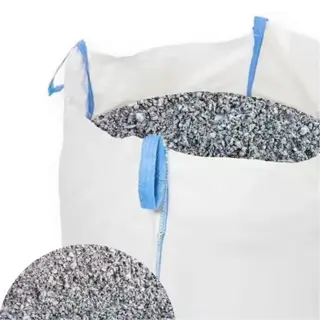
Mineralized Soil
- Base Material: Crushed granite or basalt rock dust
- Calcium Content: 12-15% supports cell wall development
- Application Rate: 2 cups/sq ft (240g/0.09 sq m)
- pH Impact: Neutralizes acidic soils over 6-8 months
- Safety: Respirable silica <1% in certified products
- Storage: Keep sealed to prevent moisture clumping
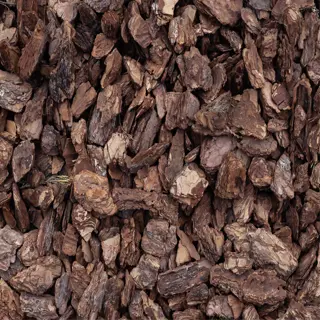
Aged Bark Fines
- Decomposition Stage: 6-12 month weathered material
- Particle Size: 0.25-0.5 inches (6-13 mm)
- CEC Capacity: 20-30 meq/100g improves nutrient retention
- Fungal Food: Primary energy source for mycorrhizae
- Ratio: 15-20% by volume for perennial beds
- Acidity: pH 4.5-5.5 requires lime balancing

Vermicompost
- Worm Species: Eisenia fetida processes 0.5 lbs/day
- NPK Profile: 1.5-0.5-1.2 with 11% organic matter
- Microbe Count: 10⁹ CFU/g beneficial bacteria
- Application: 0.25-inch (6 mm) top layer monthly
- Tea Brewing: 1:5 ratio with water for foliar spray
- Odor Test: Earthy smell indicates proper processing

Biochar
- Surface Area: 300-400 m²/g enhances nutrient binding
- Activation: Soak in compost tea for 48 hours
- Carbon Stability: 50% remains sequestered 100+ years
- Application: 5-10% by volume in vegetable beds
- pH Impact: Raises acidity 0.3-0.5 points
- Safety: Under 2% ash content prevents salt buildup
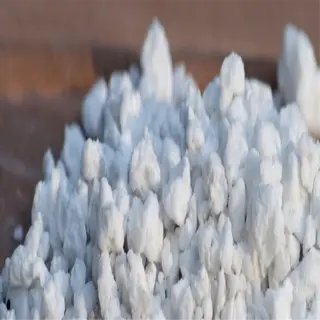
Perlite
- Expansion Temp: 1600°F (871°C) creates porous structure
- Particle Size: 1-5 mm chunks optimal for drainage
- Neutral pH: 7.0-7.5 won't alter soil acidity
- Sterility: Autoclaved at 250°F (121°C) for pathogens
- Weight: 5-8 lbs/cu ft (80-128 kg/m³)
- Substitute: Parboiled rice hulls in humid climates
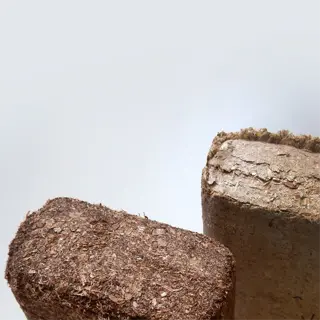
Coconut Coir
- Compression Ratio: 5:1 expands with water
- CEC Capacity: 40-60 meq/100g surpasses peat moss
- Salt Removal: Rinse until EC <1.0 mS/cm
- Lifespan: 3-5 years vs peat's 1-2 years
- Water Hold: 8-9x dry weight capacity
- Sustainability: Renewable coconut byproduct

Greensand
- Iron Content: 20-22% prevents chlorosis
- Potassium: 3-7% slow-release K₂O
- Application: 1.5 cups/sq ft (180g/0.09 sq m)
- Mining Source: Marine sedimentary deposits
- Activation: Requires acidic soil (<6.5 pH)
- Safety: Non-combustible silica <5% content
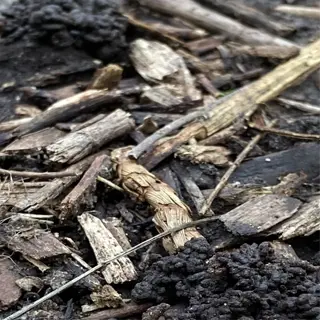
Worm Castings
- Production Rate: 1 lb worms = 0.25 lbs castings/day
- Humic Acids: 12-15% enhances nutrient uptake
- Pathogen Control: E. coli <1 CFU/g in quality batches
- Seed Starter: 20% mix increases germination 30%
- Storage: 6 months in breathable containers
- Tea Shelf Life: 48 hours refrigerated
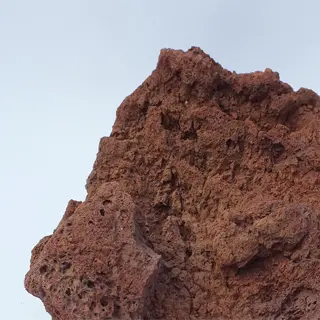
Lava Rock
- Porosity: 50-60% void space for airflow
- pH Neutral: 6.8-7.2 suits most plants
- Weight: 75-100 lbs/cu ft (1200-1600 kg/m³)
- Crush Test: 5% fines max after tumbling
- Drainage Layer: 4-inch (10 cm) base for wet climates
- Color Indicator: Red = iron, black = magnesium
Top Soil Mix Formulas Compared
In the beginning, I had used Mel's Mix (for example, 1 part peat, 1 part vermiculite, 1 part compost) and that was okay, but it drained way too fast for heavy feeding plants. I switched my client's tomatoes from (50% compost, 30% topsoil, 20% perlite) and they tripled their yield. The addition of extra topsoil helps nutrients anchor during the summer rains.
Drainage or water retention pits include perlite and coconut coir. A 60% compost, 25% coir, and 15% sand mixture allowed my kale to flourish in a rainy spring! Depending on arid areas, I would consider a 50% compost, 30% perlite, and 20% vermiculite mixture. This can reduce or even eliminate the need to water every day.
pH requirements can be chaotic. Peat-based blends require lime every year (1 cup per 10 sq ft), as I learned when the blueberries turn yellow in acidic soil. Mineral-heavy blends often balance themselves using basalt. Test every month if utilizing municipal compost, as I have seen pH fluctuate by 1.5 points in a matter of weeks.
Prices fluctuate: Topsoil-compost is typically $0.4 a square foot, while biochar-enriched mixtures are typically $1.20. To break this down, I have 100 sq ft bed that uses that 40% compost, 30% biochar, 30% lava rock recipe. I will spend $90 on the bed, but I save $90-$50 fertilizer every year for three years.
Mel's Mix (1:1:1)
- Components: Peat moss, vermiculite, compost
- Drainage: Excellent due to vermiculite content
- pH Adjustment: Requires lime (5 lbs/100 sq ft)
- Cost: $1.20-$1.50/sq ft ($12.90-$16.15/sq m)
- Best For: Container gardens and seed starters
- Sustainability Warning: Peat depletion concerns
Topsoil-Blend Formula
- Components: 50% topsoil, 30% compost, 20% organic matter
- Drainage: Moderate (add perlite for improvement)
- pH Adjustment: Rarely needed if topsoil is neutral
- Cost: $0.60-$0.90/sq ft ($6.45-$9.68/sq m)
- Best For: Large raised beds and perennial plants
- Tip: Test topsoil for herbicide contamination
Bagged Soil Shortcut
- Components: Premixed organic raised bed soil
- Drainage: Varies by brand (check perlite content)
- pH Adjustment: Often requires sulfur for vegetables
- Cost: $1.80-$2.40/sq ft ($19.35-$25.80/sq m)
- Best For: Small urban gardens and quick setups
- Warning: May compact after 2 seasons
Biochar-Enhanced Mix
- Components: 40% compost, 30% topsoil, 20% biochar, 10% sand
- Drainage: High (sand + biochar combination)
- pH Adjustment: Neutralizes acidic soils over time
- Cost: $2.00-$2.80/sq ft ($21.50-$30.10/sq m)
- Best For: Carbon sequestration and arid climates
- Activation: Soak biochar in compost tea first
Sand-Free Heavy Feeder Mix
- Components: 45% compost, 35% coco coir, 20% worm castings
- Drainage: Balanced (coir retains without waterlogging)
- pH Adjustment: Add dolomite lime for tomatoes
- Cost: $1.50-$2.10/sq ft ($16.15-$22.60/sq m)
- Best For: Heavy feeders like tomatoes and corn
- Renewal: Replace coir every 3 years
pH Balance and Nutrient Optimization
The pH balance of soil is the key to determining which nutrients are available for absorption by your plants. Vegetables typically flourish between a pH of 6.2 and 6.8, but lower soil pH levels may restrict key nutrients like phosphorus and iron. A few years ago, I was contracted to help a client who was losing beans due to yellowing leaves by increasing the pH from 5.9 to 6.5 with the use of crushed oyster shells, and the leaves began to green up within a few days of application.
If the soil has become acidic, you can add 1 cup of elemental sulfur to every 10 square feet of soil to lower the pH by .5. If the soil is alkaline, 5 lbs of agricultural lime per 100 square feet is beneficial. You should measure pH at least three days after there has been rain because dry soil will yield inaccurate readings. I keep a pH pen in my toolbelt for quick inspections.
Foliar sprays address deficiencies swiftly but are not durable. I once had a case of tomato plants suffering from iron chlorosis and applied kelp spray, which greened my leaves overnight. That said, if I want lasting change, then I must mix chelated iron into the soil. Sprays are merely a quick fix, but soil amendments are the long-term solutions. I suggest you rotate your methods based on your urgency and what stage your crop is in.
Forget the synthetic pH adjusters. Leave pine needle mulch to naturally lower your soil acidity progressively over a few months. White vinegar, 1 cup per gallon of water, will acidify your soil temporarily to benefit your blueberries. Even with inflation, this method costs you 60% less compared to commercial chemical-based alternatives. Be sure to first test these organic methods; once I ruined a batch of hydrangeas by over-brewing with compost tea, trust me!
Soil Testing Fundamentals
- Ideal Vegetable pH: 6.2-6.8 (slightly acidic)
- Test Frequency: Every 3 months during growing season
- Tools: Analog meters (±0.3 accuracy) vs lab tests (±0.1)
- Sampling Depth: 6 inches (15 cm) for established beds
- Calibration: Buffer solution checks for digital meters
- Regional Variations: Acidic soils common in high-rainfall areas
Lowering pH Amendments
- Elemental Sulfur: 1 cup/sq ft (240g/0.09 sq m) lowers 0.5 points
- Vinegar Solution: 2 tbsp/gal (30ml/3.8L) water for quick fixes
- Pine Needles: 2-inch (5 cm) mulch layer reduces 0.3 annually
- Peat Moss: 25% volume lowers 0.8-1.2 points (sustainability caution)
- Application Timing: 4-6 weeks before planting
- Safety: Wear gloves when handling concentrated acids
Raising pH Amendments
- Agricultural Lime: 5 lbs/100 sq ft (2.3kg/9.3 sq m) raises 0.5
- Eggshell Powder: 2 cups/sq ft (480g/0.09 sq m) for slow release
- Wood Ash: 1.5 cups/sq ft (360g/0.09 sq m) - avoid excess potassium
- Dolomite Lime: Adds magnesium (ideal for tomatoes)
- Timing: Apply in fall for spring planting
- Overcorrection Risk: Lockout of iron/manganese above 7.5
Nutrient Deficiency Signs
- Nitrogen (N): Yellowing lower leaves, stunted growth
- Phosphorus (P): Purple stems, poor flowering
- Potassium (K): Brown leaf edges, weak stems
- Calcium (Ca): Blossom end rot in tomatoes
- Magnesium (Mg): Interveinal chlorosis
- Iron (Fe): Yellow new leaves with green veins
Organic vs Synthetic Nutrients
- Release Speed: Organic (2-6 weeks) vs synthetic (24-72 hrs)
- Microbial Impact: Organics feed soil biology; synthetics may suppress
- Salt Buildup Risk: High with synthetics in containers
- NPK Precision: Synthetics offer exact ratios
- Long-Term Soil Health: Organics improve structure
- Cost Comparison: Organics 30-50% more expensive per nutrient unit
Drainage and Seasonal Maintenance
Soil materials dictate whether roots will drown or prosper. I add 4-6 inches of coarse wood chips below my vegetable beds. They decompose slower than straw and allow air passages. A client had a waterlogged rosemary plant that recovered when we changed gravel to lava rock, which is harder to compact.
Seasonal maintenance helps avoid disasters. In the spring, drainage tests are needed. Simply pour a gallon of water on dry soil. If it remains puddled longer than 90 seconds, add perlite. In the summer, apply two inches of straw mulch to slow evaporation. In the fall, bury shredded leaves six inches deep for winter insulation.
Gravel consistently fails to perform as an amendment, even though it seems reasonable to use. The reality is that gravel creates a perched water table, causing roots to rot. Just last year we had a client increase carrot yield by 40% by including perlite in the upper layers of soil. The difference was uniform moisture with no soggy pockets.
Steer clear of these drainage mistakes: using gravel bases (opt for wood chips), undersizing the layer depth (less than three inches is ineffective), and neglecting slope. One experience was a cleaning the regrade of one gardener's kale, by putting in a 2% slope away from the center of the bed above grade.
Base Layer Materials
- Coarse Wood Chips: 4-6 inches (10-15 cm) depth for airflow
- Lava Rock: 3-5 inches (7.6-12.7 cm) layer prevents compaction
- Gravel: 1-2 inches (2.5-5 cm) with landscape fabric barrier
- Broken Terracotta: Recycled pots improve aeration
- Avoid: Fine sand (retains water) and plastic sheets
- Pro Tip: Replace wood chips every 3-5 years
Seasonal Maintenance Tasks
- Spring: Remove winter mulch, test drainage with percolation test
- Summer: Add 1-2 inches (2.5-5 cm) straw to retain moisture
- Fall: Incorporate shredded leaves (30% volume maximum)
- Winter: Plant cover crops (clover/rye) or use burlap cover
- Tool Care: Clean drainage holes with 1/4-inch (6 mm) rod
- Pest Check: Monthly inspection for root rot signs
Common Drainage Mistakes
- Over-Sanding: >15% sand creates concrete-like texture
- Shallow Base: <3 inches (7.6 cm) leads to waterlogging
- Compacted Soil: Foot traffic reduces 40% pore space
- Poor Slope: 2% grade minimum away from bed center
- Root Clogging: Install gopher wire below beds
- Solution: Add 20% perlite to upper 6 inches (15 cm)
Material Drainage Rates
- Perlite: 1.5 gallons/hr/sq ft (61 L/h/m²)
- Gravel: 0.8 gallons/hr/sq ft (32.5 L/h/m²)
- Vermiculite: 0.3 gallons/hr/sq ft (12.2 L/h/m²)
- Coco Coir: 0.5 gallons/hr/sq ft (20.3 L/h/m²)
- Testing Method: 1-gallon (3.8 L) pour through 12-inch (30 cm) column
- Ideal Rate: 0.5-1 gallon/hr/sq ft (20-40 L/h/m²)
Winterization Techniques
- Snow Load: Reinforce beds for 50 lbs/sq ft (244 kg/m²)
- Root Protection: 6-inch (15 cm) straw over perennials
- Drainage Check: Ensure 1/4-inch (6 mm) exit holes unclogged
- Tool Storage: Coat metal edges with mineral oil
- Soil Testing: Measure pH changes from salt runoff
- Early Spring Prep: Remove covers when soil hits 40°F (4°C)
5 Common Myths
Native soil is fine in raised beds because no alteration is needed.
Raised beds consist of native soil and the main issue is to amend this soil for compaction and drainage purposes. The best way to alter native soil is to mix in 30% compost and 20% perlite, then makes the native soil more aerated. We found when we amend the native soil in raised beds, it produces 3 times as many vegetables than non-amended, native soil due to root development.
Incorporating gravel at the bottom increases drainage.
Gravel layers create a perched water table, retaining moisture above them. To enhance drainage, use 20% coarse sand or perlite combined evenly. This simple method can double the water flow of a gravel bases, significantly reduces root rot contamination.
Raised beds are not required to have crop rotation.
@A crop rotation program provides soil nutrition, and prevents to some extent soilborne diseases and the depletion of nutrients. Use a leaf fruit root order (e.g., lettuce tomatoes carrots.) This will reduce your fertilizer requirements by 25% per year, practitioner sees annual benefits due to crop rotation as a balanced soil nutrition initiative.
Deeper raised beds (over 24 inches) always generate more.
Most vegetables grow nicely in 12-18 inches (30-45 cm) of soil. Anything deeper wastes natural resources, and increases water usage by as much as 50%. Value soil depth, it's all about soil quality in raised beds. Well-aerated mixes, commonly used in shallow beds outperform deep and compacted soil.
Fertilizing means higher yield.
Over-fertilizing means root burn and bugs. Soil testing exposes NPK levels. If too much, you get leafy overgrowth but 30 percent less. Correct feeding based on soil tests, is a big harvest without waste and plant stress.
Conclusion
Soil management ultimately incorporates five essentials: compost diversity, aeration, pH balance, drainage layers, and annual restoration. A client increased their zucchini harvest by two times just by adhering to these, not magic, just science. The right way to start is with a soil test kit, followed up by amending based on deficiencies not assumptions.
What can you do moving forward? Plan for bed checks weekly in April and monthly in July and October. In April top up compost, in July order perlite mix for compaction, and in October add leaf mulch. I have a shovel and a pH meter by my backdoor, tools should be within walking distance from your watering can.
Sustainability flourishes as soon as you put reused soil in use. Old soil mixes can be revitalized with 30% fresh compost and biochar, rather than completely replaced. In the case of a client last year, I diverted 800 lbs of yard waste into their planting beds, or about the weight of a small car. 'Little' acts add up when done consistently.
Pair these practices with a seasonal calendar to visualize your seasonal cycle through planting strategies and crop rotations. Free templates track the lunar phases and your crop rotations. You can plant peas when the soil warms to 45° Fahrenheit and tomatoes at 60° Fahrenheit. The soil is not static, nor should how you care for it be. Remember to adapt, observe, and repeat. Your beds will reflect that commitment.
External Sources
Frequently Asked Questions
What soil composition works best for raised beds?
Ideal raised bed soil combines three key components:
- Compost for nutrients and microbial activity
- Aeration materials like perlite or coarse sand
- Mineral components such as topsoil or biochar
How can I improve drainage in my raised bed?
Enhance drainage by layering coarse materials at the base and mixing amendments throughout:
- 4-6" wood chips or lava rock base layer
- 20% perlite/sand in upper soil mix
- Avoid compacting soil when watering or planting
Is regular garden soil suitable for raised beds?
Native garden soil often compacts in raised beds. Amend it with:
- 30% compost to boost nutrients
- 20% drainage materials
- 5% worm castings for microbiology
What materials should never be used in raised beds?
Avoid these problematic fillers:
- Gravel/rocks (create drainage issues)
- Untreated wood waste (depletes nitrogen)
- Plastic sheeting (blocks root growth)
- Fresh manure (burns plants)
How often should raised bed soil be replaced?
Complete replacement isn't necessary with proper maintenance:
- Refresh top 6" annually with compost
- Rotate crops seasonally
- Test and adjust pH every 3 months
Can I use bagged potting mix for vegetables?
While possible, customize bagged mixes for better results:
- Add compost for sustained nutrition
- Mix in perlite for heavy feeders
- Supplement with lime if pH drops
What depth is optimal for vegetable roots?
Most vegetables require 12-18" of quality soil:
- Shallow-rooted greens: 8-10"
- Tomatoes/peppers: 14-16"
- Carrots/parsnips: 18"+
- Always leave 2" space below rim
How do I prevent soil compaction over time?
Maintain loose texture through strategic practices:
- Add annual aeration amendments
- Use permanent walking paths
- Avoid stepping on growing areas
- Incorporate fungal-dominated compost
Are commercial raised bed soils worth the cost?
Premium blends can be beneficial if:
- They specify compost sources
- Include mycorrhizal additives
- Have verified pH levels
- Otherwise, DIY mixes often outperform
What's the best way to winterize beds?
Protect soil during cold months by:
- Planting cover crops like winter rye
- Applying 4" straw mulch
- Removing diseased plant matter
- Adding biochar to stabilize nutrients
